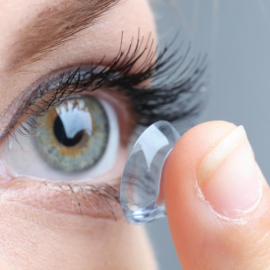As people age, they produce less lubricating basal tear secretions. People over 50 are more prone to dry eyes. Dry eyes sting and burn. Recirculated airplane air, AC, sports, using a computer can cause dry eyes. People who wear contact lenses and those taking antihistamines are more susceptible to dry eyes. Dry eyes may also be associated with collagen vascular disease. Your tears are a complex mixture of water, fatty oils and mucus that helps make the surface of your eyes smooth and clear. Tears help protect your eyes from infection.
For some people, the cause of dry eyes is decreased tear production. For others it's increased tear evaporation and an imbalance in the makeup of your tears.
The medical term for not producing enough tears to lubricate your eyes is keratoconjunctivitis. Decreased tear production can be caused by:
Increased tear evaporation causes dry eyes. Common causes are wind, smoke or dry air. Infrequent blinking (tends to occur when you're concentrating while reading, driving or working at a computer) causes dry eyes as do eyelid problems like ectropion in which the eyelids turn outward and entropion in which the eyelids turn in.
An imbalance in tear composition also causes dry eyes. The tear film has three basic layers: oil, water and mucus. Problems with any of these layers can cause dry eyes. The oil film produced by small glands on the edge of your eyelids (meibomian glands) might become clogged, a condition that is more common in people with inflammation along the edge of their eyelids (blepharitis), rosacea or other skin disorders.
Without adequate tears, you may have an increased risk of eye infection. If left untreated severely dry eyes can result in inflammation of the eye, abrasion of the corneal surface, corneal ulcer and vision problems. Dry eyes can make it challenging to perform everyday activities, even simple activities like reading.



Prevent dry eyes by installing a humidifier in your home. Don’t aim hair dryers, car heaters, air conditioners or fans directly toward your eyes.
Women are more prone to dry eyes particularly when hormonal changes due to pregnancy, using birth control pills or menopause.
A diet low in vitamin A (found in liver, carrots and broccoli) or low in omega-3 fatty acids (fish, walnuts and vegetable oils) can contribute to dry eyes.
Position your computer screen below eye level. If your computer screen is above eye level, you'll open your eyes wider to view the screen. Position your computer screen below eye level to prevent opening your eyes as wide as is necessary with the screen mounted high.
Stop smoking and avoid smoke. Smoke worsens dry eyes symptoms.